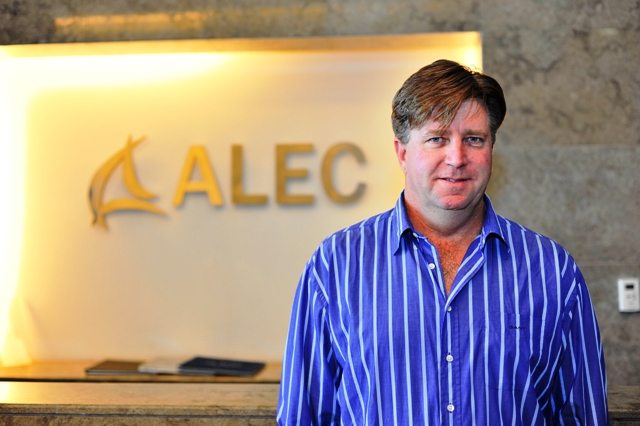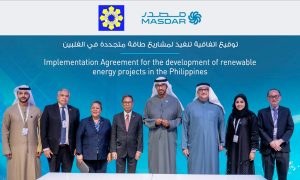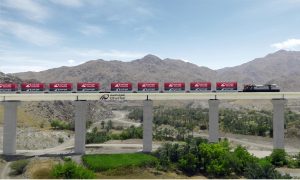A Fine Balance
Gavin Davids talks to Kez Taylor, chief executive officer of ALEC, about what needs to change to make the regional construction industry a unified force to reckon with

“We’ve had a really challenging year, but also a very successful one. We’ve just finished Concourse A (Part of Terminal III at Dubai International Airport), which was a huge project. It’s the first dedicated A380 terminal concourse in the world. It was a tough job, but we had a very good leadership team on that project and we worked really well together. From consultant to client, we all had a common objective and we pulled off the job successfully,” says Kez Taylor, chief executive officer of ALEC, as Big Project ME sits down for a chat with him at the contracting firm’s headquarters in Dubai Marina. Without realising it, he’s just pointed out a fundamental flaw in the way Dubai’s construction industry operates, and at the same time, shown how things could and should be done in the future. Not a bad start to the interview. Having set up shop in 1999, ALEC has been involved in a number of major construction projects across the GCC, with projects such as the Dubai and Doha international airports and the recently opened Yas Waterworld as part of its portfolio. Kez Taylor has overseen the growth of the company to a regional behemoth, with offices in Oman, Qatar and Abu Dhabi. As such, he’s perfectly positioned to cast a critical eye across the industry and lead the call for a change in the way business is conducted in the region, starting with Dubai and Abu Dhabi. “The market has definitely picked up, especially in the UAE and in Dubai. Business confidence is back here although Dubai went through a bit of a slow period. It’s positive to see things picking up again, and I think the players that are still here today are the players that are in here for the long term,” he says. “Confidence has come back and people are actively participating again, but look, I think the more mature clients, they realise the value of having the right participants in the team, and they’ve realised that if you put the right team together, you end up with a winning solution for all parties. This is a good solution to have.” “It’s about not having a ‘win-lose scenario’, it’s about ensuring all participants in the team succeed out of it (the project). That’s what we have to strive for all the time, to find those kinds of balances. In our industry, you don’t often get that kind of scenario. It often ends up in a ‘win-lose scenario’, or maybe a ‘lose-lose scenario’. Those aren’t good scenarios to be in,” Taylor explains. “We always look for where we can actually end up with a solution that benefits all parties (involved in a project).” This approach could have wider reaching consequences for the industry he says, which has too often seen clients and developers opting to make short-term decisions that have repercussions further down the line. Citing well publicised instances where clients have opted to hire the lowest tendering consultant and contractor for a project to save costs, Taylor says that this often leads to problems further down the line, that end up costing the client millions. “It’s been proven through research that a consultant, who isn’t maybe the cheapest guy, will deliver and save the client 10% of overall development costs because he’s come up with an efficient design. As opposed to the cheaper guy who doesn’t provide the right kind of service and actually ends up costing the client 20% more. You’ve got to see the value,” he says. “What’s the value of having the right consultant who’s going to come up with a brilliant design and what is the value of having the right contractor that can get involved early enough that he can influence things for the benefit of the client?” He asks, knowing that the answer is obvious. “If you look at it, we entered into contracts where the design team is employed by the client and the contracting team is also employed by the client, but they’re actually separate. They don’t really come together and in that, you also enter into a contract where you’ve got very onerous terms and conditions.” “So from my perspective, what we really need to do, moving into the future, is that the design teams need to come up with designs that are workable, efficient, that are cost effective, that are constructible and I think there needs to be a meeting of minds at a much earlier phase if you want to have a really successful development that’s going to deliver value through to the client,” he asserts. Terming the current situation as ‘people working in silos’, Taylor is adamant that if all the elements of the team come together early in a project, it will be more cost effective and beneficial for the client in the long run. “I think what’s got to happen is that you’ve got to bring those minds together and you’ve got to end up with a design that works, something that’s constructible, cost effective and a benefit to the project and the client at the end of the day. I don’t think we do that as an industry,” he says. “Our industry is very divided, so we have onerous contracts, we have designers that are employed under a certain set of conditions, and (the whole situation) doesn’t necessarily provide a suitable service.” As such, he suggests that perhaps the best option could be having a body that acts on behalf of the industry, setting out a clear set of guidelines, not only on best practices, but also on drawing up fair contracts, reasonable terms and conditions and that helps to foster a long term relationship with players in the construction industry. “I think you’ve got to have people who see the big picture work together. It’s not just about one project, but it’s about being successful on one project and seeing a long-term continuity relationship develop with those players. You’ve got to really strive to try and find the right participants that have that kind of mind-set. And also, the terms and conditions that people are employed under need to be reasonable for both parties. You need a fair set of contracting conditions and you don’t always get that,” Taylor explains. This is where he returns to his original point, stating that a representative body could be a feasible step in the right direction. Not only will it bring order to the industry, it also increases the accountability of all participants, from design to contractor to sub-contractor on a project. “We’re part of a big industry and I think we should encourage it (an industry body). It would definitely be a good thing and it would be well supported by the industry.” “There’s a lot of confusion in our industry about who’s accountable for what. I don’t believe that there’s clear accountability for various bodies and we always end up with a grey area of shop drawings as a main contractor. Where people interpret where that responsibility starts and ends is often very different. I think what we need is for people to take accountability for what their responsibilities are and then get their cooperation within that framework.” Bringing things full circle, Taylor says that Dubai Airport’s growth over the last ten years is the perfect case study for the changes he’s suggesting. “How do you deliver the requirements on a fast track basis when you don’t even have a full design yet? How do you figure it out? How do you get it right? I think (Concourse A) is a good example of that,” he points out. “We didn’t have a full design and we actually had to put a team together. We all had to come together to come up with a workable solution, and I think we could use this as a case study (for the industry),” Taylor concludes.

















